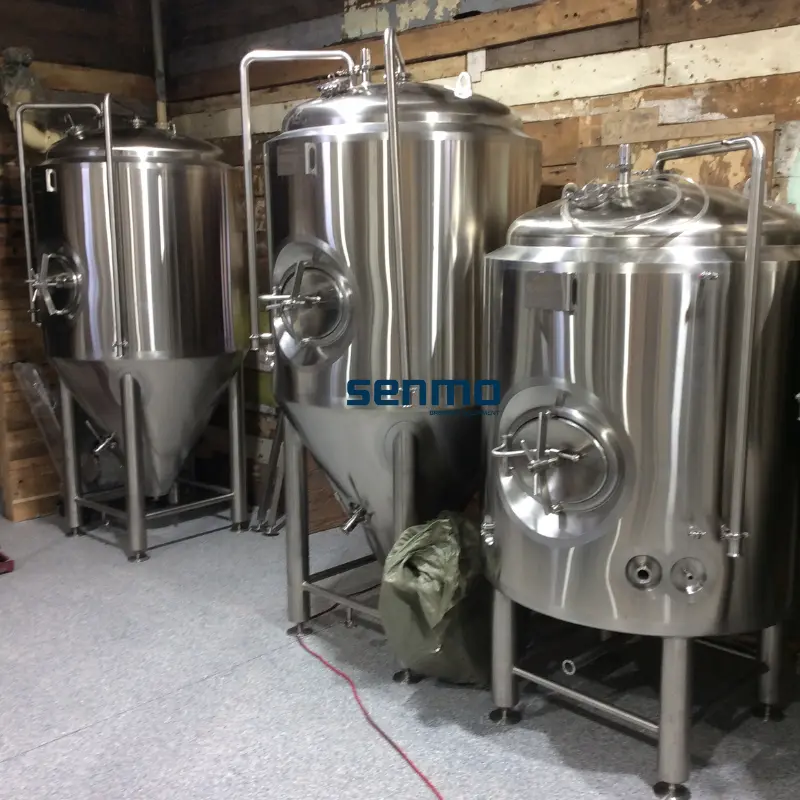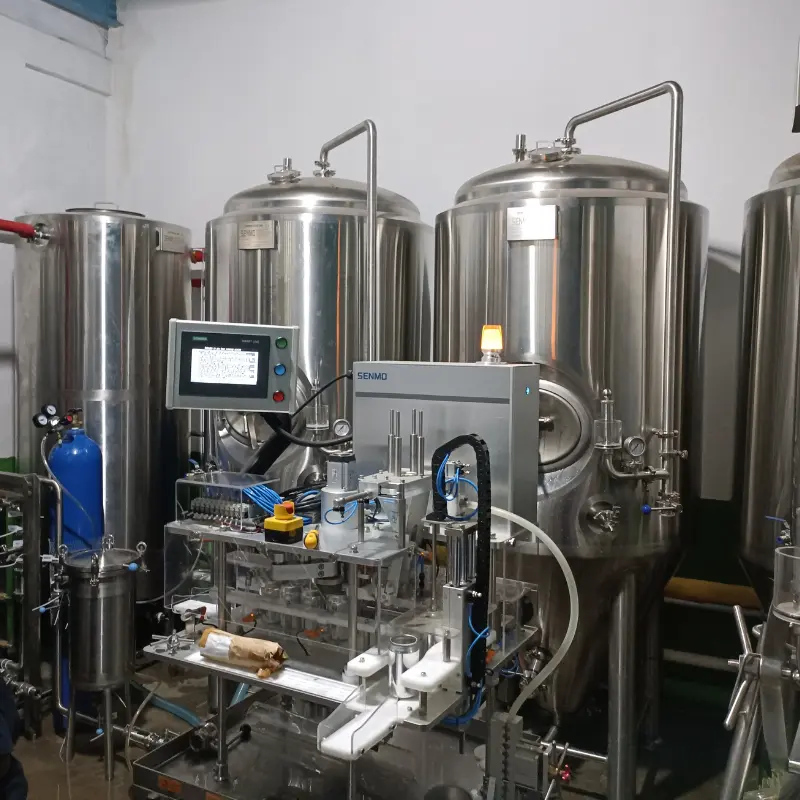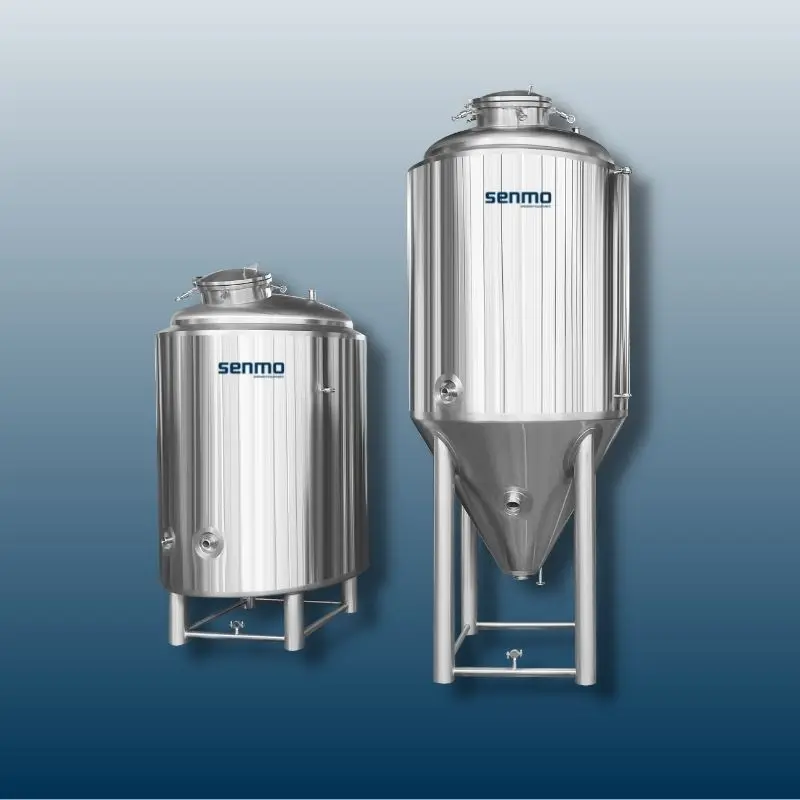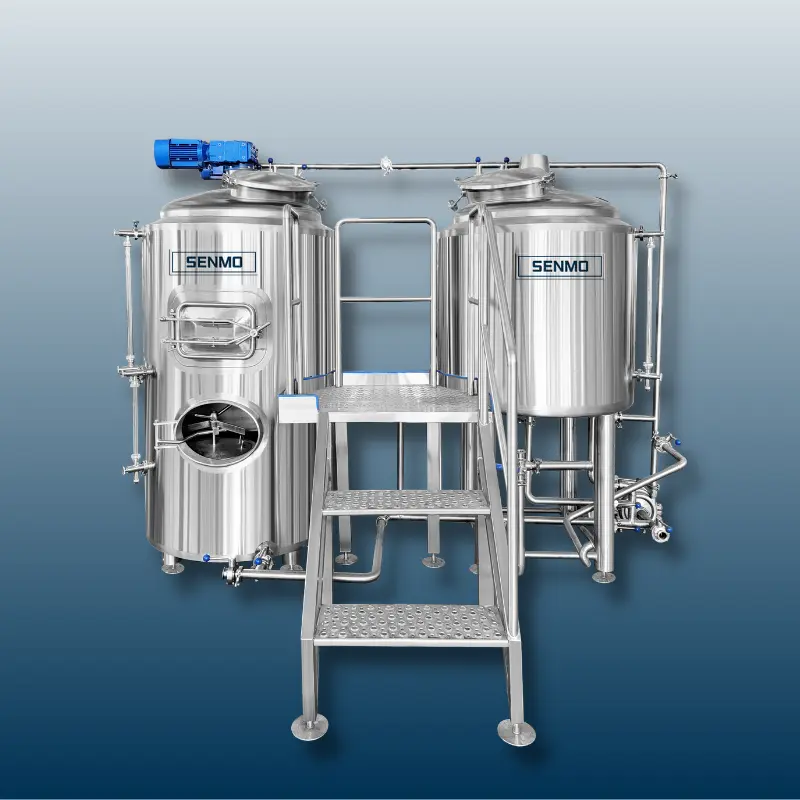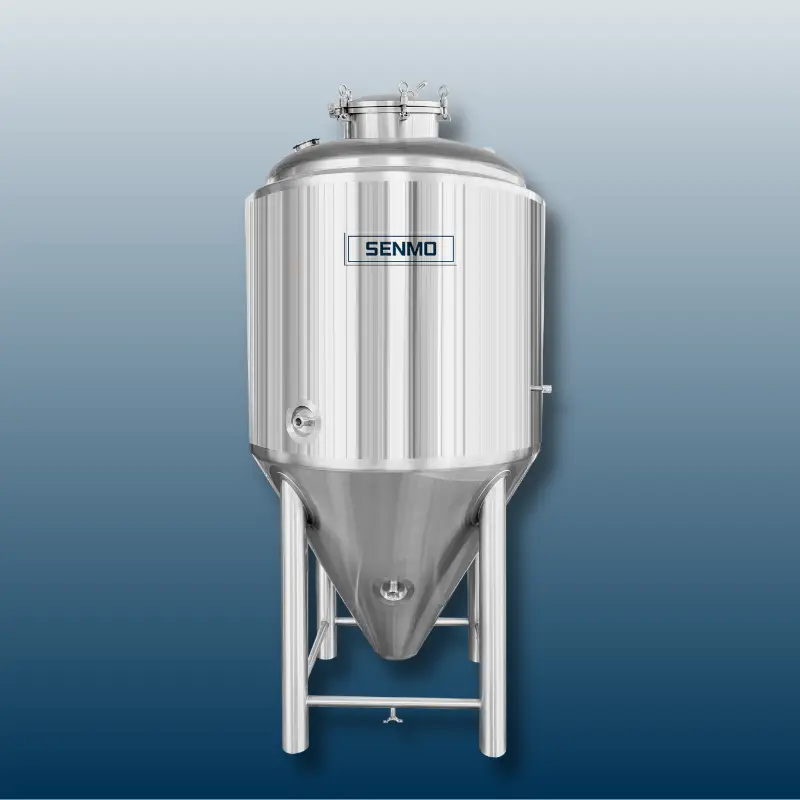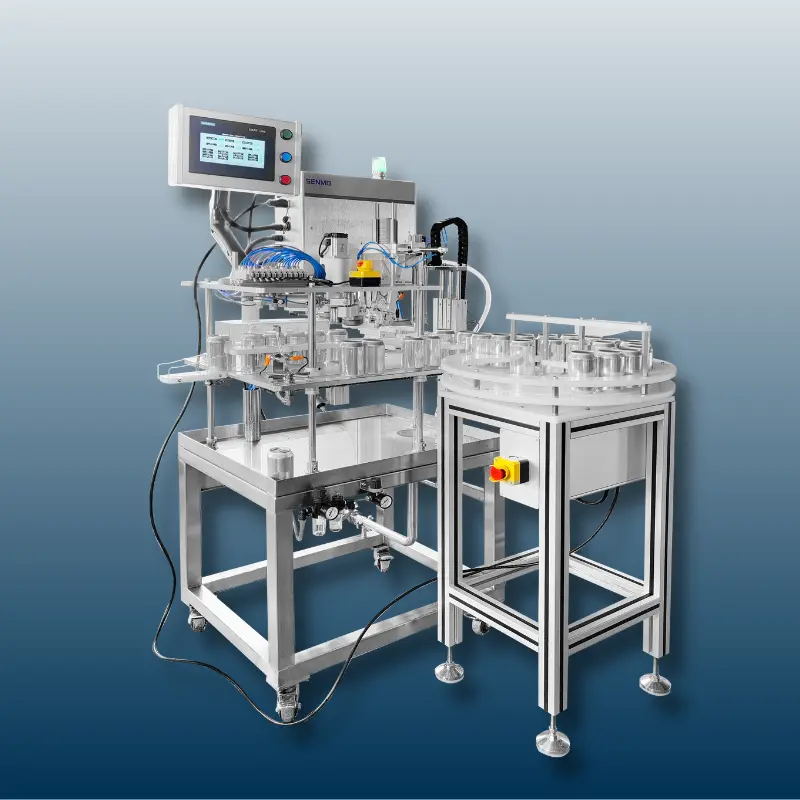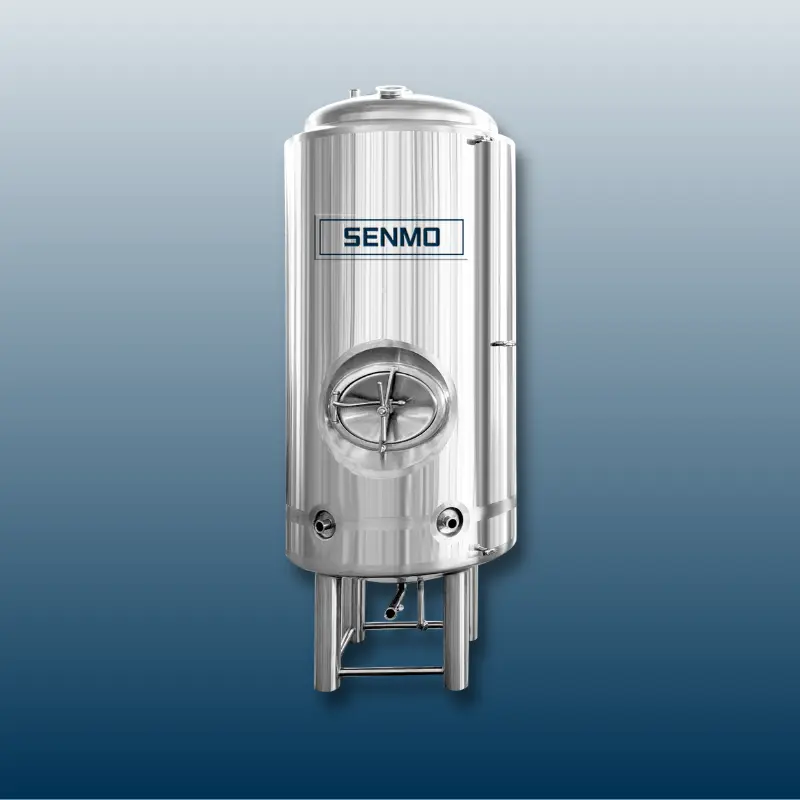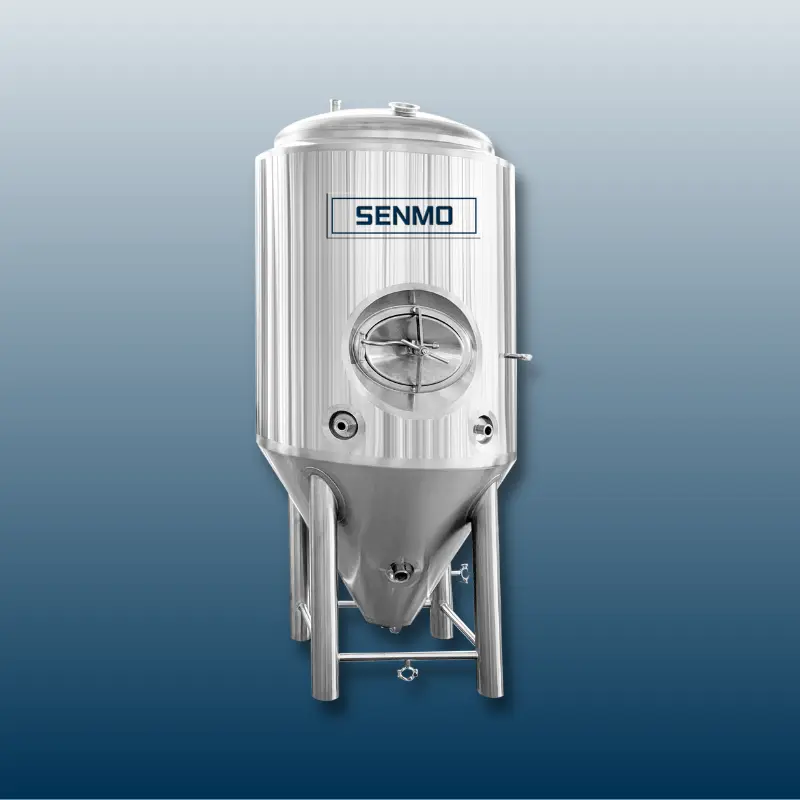Microbrewery brewing equipment 20hl 2000L mash tun
In the world of craft brewing, the mash tun stands as the epicenter of creativity, where raw ingredients are transformed into the sweet nectar of beer. For microbreweries committed to the art and science of brewing, the 20hl (2000L) mash tun is an indispensable piece of equipment.

The purpose of the 2000L mash tun inside of the beer brewing system
Mash - the process of converting starch into sugar
Purpose: To convert malt starch into fermentable sugar by using enzymes in malt (some enzyme preparations are also added). Yeast can only metabolize carbohydrate, and cannot directly use starch.
The mash process is critical. Through the adjustment of the saccharification process, you can adjust the wort composition, such as the fermentable sugar content, amino acid content, etc. The wort composition will directly affect the fermentation, beer style, taste, etc.
Mash process elements: mainly temperature and time. Different temperatures produce different amino acids and different sugars. Control the time at different temperatures to obtain the corresponding wort composition (sugar profile).
The residence time of mash in the mash tun is about 90 minutes, the general protein decomposition time is 30-40 minutes (amino acid profile), and the mash time is 40-50 minutes.
After mashing (through iodine detection - no purple color is produced, it means complete mashing), the mash is sent to the filter tank

Key parameters of the 2000L mash tun inside of the brewhouse
The process parameters require that the top space of the mash tun shall not be less than 20% of the full volume; Heating rate ≥ 1.0 ℃/min.
1. Material: food grade sus304 or sus316. The thickness of the plate is determined according to the size of the tun,common thickness is 3mm inner tank and 2mm outer tank
2. Thermal insulation: rock wool thermal insulation.The minimum thickness of the insulation layer is 80cm
3. Mixing: Large diameter low-speed mixing blades, suspension reducer and variable frequency control of mixing speed should be used for mixing to avoid turbulence on the liquid surface during mixing and reduce oxygen absorption of mash (upper mixing and lower mixing should be reasonably selected according to equipment requirements)

4. Heating area of the 2000L mash tun and heating method: The steam heating jackets make sure the heating steam enters the jacket evenly, and at the same time, it shall prevent the condensate from being discharged unobstructedly, forming a "water hammer" to damage the jacket. Therefore, the jackets shall be semicircular pipe type or dimple type, controlled by sections. The steam entering and condensing water leaving shall be multi-point in and out, with a little excessive heating intensity to ensure sufficient heating area, Select a good steam trap (The basic function of the steam trap is to discharge the cold condensed water and air in the steam system as soon as possible, and at the same time automatically prevent steam leakage to the maximum extent. During the process of mashing and boiling, the amount of condensed water is large. If the drainage capacity is not reached, the condensed water in the jacket will not come out, and then the steam cannot enter, the heating rate will not keep up, and finally the boiling strength will not be reached. Therefore, it is recommended that the drainage capacity of the steam trap is the maximum cold More than twice the condensate. In addition, a three-way gate valve is added in front of the drain valve to drain the condensed water in the pipe and jacket after each startup or cooling to prevent the formation of "water hammer" and damage to the equipment. For those who already have equipment, if they feel that the heating speed of the mash tun or wort kettle is getting slower and slower during use, and they hear the sound of water hitting during the heating process, they should consider the problem of steam trap)

5. Temperature control: It is better that the equipment is equipped with a directly readable thermometer. And choose different automatic temperature control devices according to their own economic strength (pneumatic angle seat valve temperature control, solenoid valve, etc.)
6. The structure (drawing) of the 2000L mash tun must have liquid level. The empty capacity is more than 20%. Select a reasonable taper according to the size of the equipment.
7. Cleaning: the inside of the tank body is smooth and clean without dead corners, especially the welding quality of the welding joint treatment, which is smooth and clean, and the selection of cleaning balls is reasonable

8. The steam jacket will produce a large amount of condensate, which can be completely recycled. It can be used as softened water of boiler (for equipment with large capacity, it is recommended to add pipeline steam condensate recovery system to save energy consumption of boiler)
9. The material pipeline design is reasonable. In the saccharification process, the material pipeline will be blocked, and a backwash pipe will be installed at this position.

The 20hl (2000L) mash tun is more than just a vessel; it's the cornerstone of brewing excellence in the microbrewery world. Its capacity, meticulous design, temperature control, and recipe flexibility empower microbrewers to craft exceptional beer, meeting the diverse tastes of today's discerning beer enthusiasts. With this equipment at the heart of their operation, microbreweries are poised to create a legacy of brewing craftsmanship that thrives on innovation, tradition, and precision. Cheers to the 20hl (2000L) mash tun and the microbreweries that elevate the craft of brewing to new heights of excellence.
If you are considering entering the brewing beer or craft beer industry. Whether it is investing in bars,breweries, restaurants, or small and medium-sized breweries, it is necessary to have a clear understanding of the requirements for beer brewing technology and equipment technology configuration. If you have any questions, please communicate with professionals and manufacturers in detail. Shandong SENMO Machinery Co., Ltd., as a professional beer equipment production service provider, provides you with professional technical consultation in the early stage, and carries out equipment design, production, installation, commissioning and other services according to the requirements of beer brewing technology.
FAQ
1. What is a mash tun, and what is its role in the brewing process?
A mash tun is a vessel in brewing equipment where malted grains are mixed with hot water to create a mash. This is the first step in brewing, where enzymes convert starches in the grains into fermentable sugars, which are crucial for the beer production process.
2. Why is a 20hl (2000L) mash tun important for microbreweries?
A 20hl (2000L) mash tun is essential for microbreweries due to its larger capacity, which allows for efficient brewing and consistency in batch production. It enables microbreweries to meet demand while maintaining high-quality standards.
3. How does temperature control work in a mash tun, and why is it important?
Temperature control in a mash tun is critical because it regulates enzymatic reactions necessary for sugar conversion. The precise temperature control system ensures that the mash maintains the correct temperature range for optimal sugar extraction.
4. Can microbreweries use a 20hl (2000L) mash tun for brewing various beer styles?
Yes, the flexibility of a 20hl (2000L) mash tun allows microbreweries to create a wide range of beer styles, from light lagers to robust stouts. It's a versatile vessel that encourages creativity and experimentation.
5. How does a 20hl (2000L) mash tun save time and improve efficiency for microbreweries?
The larger batch size of a 20hl mash tun reduces the need for multiple smaller batches, saving time and labor. It streamlines the brewing process, making it more efficient and cost-effective.
6. What is the role of the agitator in a mash tun, and how does it contribute to brewing success?
The agitator in a mash tun ensures even mixing of the malted grains and hot water, promoting effective mashing and sugar extraction. It is a crucial component for consistent and quality brewing.
7. Can microbreweries achieve consistency and quality with a 20hl (2000L) mash tun?
Yes, consistency is a hallmark of quality brewing, and the 20hl (2000L) mash tun allows microbreweries to replicate successful recipes with precision. This consistency is vital for maintaining high-quality beer.
8. Are there any safety considerations when operating a 20hl (2000L) mash tun in a microbrewery?
Safety is a paramount concern. Microbreweries should ensure that their staff receives proper training in operating the equipment safely. Following safety protocols and complying with regulations is vital to creating a secure brewing environment.
9. How does the 20hl (2000L) mash tun contribute to the craft of brewing in microbreweries?
The 20hl (2000L) mash tun is an essential tool that empowers microbreweries to craft exceptional beer, meet demand, and maintain quality and consistency. It's at the heart of the brewing process, ensuring that microbrewers can create a legacy of brewing craftsmanship and excellence.







